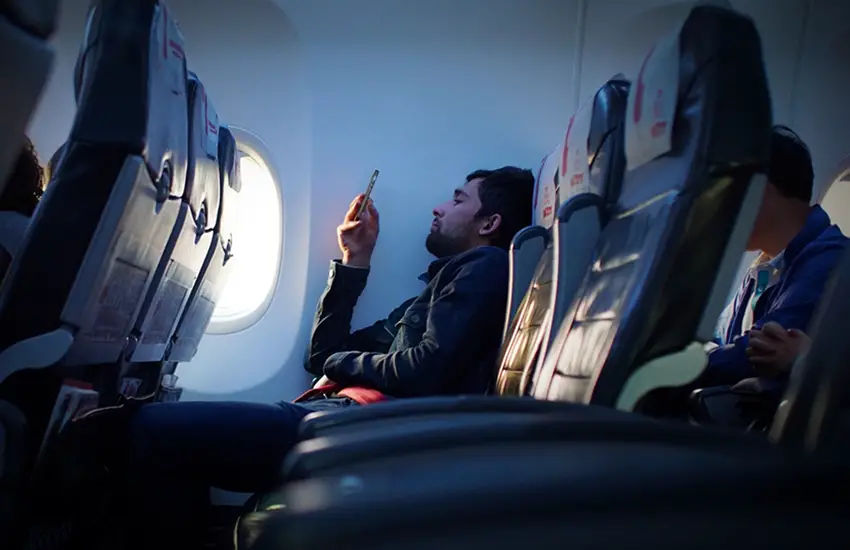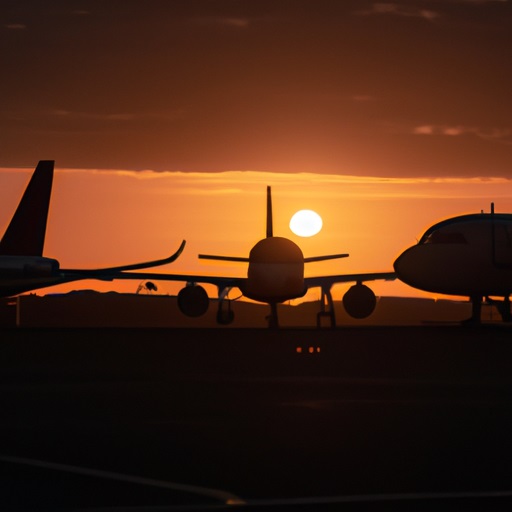
Why Ancillary Revenue Is Crucial For Airlines?
The airline industry operates on razor-thin profit margins. In fact, globally most years airlines lose money. This makes finding new revenue streams outside of just ticket sales incredibly important. That’s where ancillary revenue comes in. Ancillary revenue refers to revenue generated by airlines through offerings beyond just flights. This includes things like baggage fees, seat selections, onboard food/beverage sales, frequent flyer programs, and much more.
Ancillary revenue has become a major component of airline income over the past decade. In 2022, ancillary revenue for airlines globally was projected to reach $92.9 billion. That’s up from just $13.5 billion in 2007. Today ancillary revenue accounts for around 12.2% of total airline income on average. For some low-cost carriers, ancillary revenue makes up over 50% of total earnings.
Here’s why ancillary revenue has become so crucial for airlines:
It Offsets Lower Ticket Prices
In order to stay competitive, airlines have been pushed to lower base airfare prices significantly over the past 20 years. Ticket prices in the US have dropped around 30% since 1995 when adjusted for inflation. However, costs like fuel, labor, maintenance have not dropped nearly as much. Ancillary revenue helps bridge this gap between lower ticket revenue and persistent operating costs. It has allowed airlines to keep base fares low to attract customers while still generating income via fees and add-ons. This balanced approach maximizes revenue.
It Allows Price Discrimination
Ancillary revenue allows airlines to implement price discrimination strategies. Price discrimination means charging different prices to different customer segments based on their willingness/ability to pay. Business travelers are less price sensitive than leisure travelers. So airlines can keep base fares low to appeal to vacationers. Then they generate extra revenue from business flyers through premium seat fees, priority boarding, etc. This segmenting of customers wouldn’t be possible without ancillary revenue offerings.
It Provides More Customer Choices
Today’s travelers have come to expect a wide range of choices when they fly. Ancillary revenue allows airlines to provide options like seat selection, extra legroom seats, in-flight wifi, movies, meals, and more. This customized flying experience caters to what each customer values most. And customers are often willing to pay extra for these “nice-to-have” services on top of just getting a basic seat from A to B. The increase in customer choice drives ancillary sales.
It Enhances Loyalty Programs
Loyalty programs like frequent flyer miles have become huge revenue generators and customer retention tools for airlines. The more ancillary offerings an airline has, the more ways they can allow customers to earn or redeem miles. Things like seat upgrades, bag fees, in-flight purchases, partner hotel bookings, car rentals and more all integrate with airline loyalty programs. This drives “stickiness” and repeated customer spending, ultimately enhancing ancillary revenue.
It Offsets Rising Costs
Airlines face continually rising operating costs in multiple areas: labor, maintenance, fuel, aircraft leases, airport fees, taxes, and more. Generating profitable ancillary revenue provides an avenue for airlines to counteract these increasing costs without having to just raise ticket prices. Airlines can be strategic with which ancillary fees or loyalty offerings they mark up to offset specific areas of rising costs. This ancillary revenue contribution is key for maintaining profitability.
It Allows Unbundling of Products/Services
A la carte ancillary fees basically represent an unbundling of the air travel experience. Airlines now charge for all the individual products/services that were historically included in the ticket price. While customers may dislike this unbundling, it has enabled airlines to maximize revenue. Customers only pay for what they want or need, while airlines get paid for everything offered vs just the base flight. Unbundling would not be possible without a robust ancillary revenue strategy.
It Can Smooth Out Demand Fluctuations
Airline revenue faces dramatic swings based on seasons, holidays, events etc. Ancillary revenue offers a way for airlines to smooth out some of this volatility. For example, when fare prices drop, fees for things like seat selection or bags may rise. Airlines can shift the revenue mix to rely more heavily on ancillary income during low demand periods. This helps buffer against dips in core ticket sales.
It Incentivizes Employees
Many airlines now compensate employees not just based on customer satisfaction scores or operational metrics, but also performance on ancillary revenue. Flight attendants can earn bonuses or commissions for onboard sales volumes. Gate agents may get rewards for executing fare upsells. This incentive model has helped drive an increase in ancillary sales.
It Provides More Overall Revenue Streams
At the end of the day, ancillary revenue simply offers more ways for airlines to make money beyond selling tickets. There are now dozens of ancillary revenue streams from fees, services, partnerships, advertisements and more. Airlines continue looking for creative new offerings that can be rolled into ancillary income channels. Having numerous, diverse revenue streams helps hedge risk vs relying only on ticket sales.
It Has Become Expected by Investors
For publicly traded airlines, ancillary revenue numbers are now scrutinized closely by investors each earnings period. Strong ancillary revenue performance boosts stock prices. Weak ancillary revenue drags stocks down. This investor expectation has forced airlines to make ancillary offerings and optimization a top priority. Without ancillary sales growth and strategy, airlines face shareholder dissatisfaction.
Challenges with Ancillary Revenue
While clearly beneficial overall, ancillary revenue does come with some challenges airlines must manage:
- Complex pricing strategies – With a la carte pricing for dozens of services, airlines have to constantly monitor demand, profitability, and customer reactions to get pricing right. Finding the optimal balance is very difficult.
- Negative customer sentiment – Many customers feel nickeled and dimed by ancillary fees. Too many extra charges can anger customers and damage the brand experience.
- Training employees – Employees need proper training across all roles to promote and sell ancillary offerings without being overly pushy with customers.
- Partnership management – Many ancillary offerings involve external partners (like hotels, rental cars). Airlines must closely manage these partnerships to ensure high-quality customer experiences.
- Logistical coordination – Operationally, ancillary services like bags, seating, meals require close cross-departmental coordination between sales, airport staff, flight crews, etc. This adds complexity for airlines.
- Revenue displacement – Some ancillary offerings may simply displace revenue from other options. Airlines must be careful to develop truly incremental ancillary ideas vs shifting revenue buckets around.
- Regulation – Many countries regulate policies around ancillary fee practices and disclosure requirements to protect consumers. Navigating regulations adds another layer of complexity.
So in summary, ancillary revenue has clearly become a key success factor and expectation for airlines worldwide. When utilized strategically, it delivers valuable additional income streams while enhancing the customer experience. Ancillary revenue enables low base fares that stimulate demand combined with customizable options travelers will pay extra for. While not without challenges, the benefits for airlines are undeniable. Ancillary offerings will continue evolving as airlines become more creative and sophisticated with segmentation, pricing, partnerships. This revenue will remain mission-critical to the future of the airline industry.
FAQs About Ancillary Revenue
What are some major ancillary revenue streams for airlines?
Some top ancillary revenue streams include:
- Baggage fees
- Seat selection fees
- Onboard food/beverage sales
- Frequent flyer programs
- Travel insurance policies
- Change/cancellation fees
- In-flight wifi/entertainment
- Branded fares (extra legroom, priority boarding, etc.)
- Commission from hotel/car rental bookings
- Partnership credits (retailers, restaurants, etc.)
- Co-branded credit cards
How has ancillary revenue changed over time?
Ancillary revenue was practically non-existent for airlines prior to the 2000s. Deregulation allowed airlines to implement fees and unbundle services historically included in ticket prices. Ancillary revenue for US airlines was only $2.45 billion in 2007. It soared to over $25 billion by 2011 and now exceeds $50 billion annually.
Do low-cost carriers rely on ancillary revenue more?
Yes, ancillary revenue makes up a much larger portion of total revenue at low-cost carriers. At ultra low-cost carriers like Spirit or Allegiant, ancillary revenue accounts for over 50% of earnings. At full service airlines like Delta or British Airways it’s closer to 15%.
What are the capabilities required to maximize ancillary revenue?
Airlines need capabilities like customer segmentation, dynamic pricing algorithms, product bundling, advanced CRM systems, comprehensive payment platforms, and integration with operational systems. Ancillary offerings must be underpinned by data and technology capabilities.
Do customers appreciate ancillary offerings?
Surveys suggest around 60% of customers are happy to pay for ancillary services they value. But airlines tread a fine line, as too many extra fees can frustrate travelers. The key is giving flyers transparency and choice rather than forcing unwanted services on them.
How are employees measured on ancillary performance?
Many airlines are linking ancillary revenue goals to employee compensation and incentives. Gate agents may have conversion rate goals for upselling bags/seats. Flight attendants have sales objectives for onboard credit card signups or food purchases.
What’s the outlook for future ancillary revenue growth?
IATA projects total airline ancillary revenue will reach $155 billion globally by 2028. New products like in-flight wifi are fueling growth along with continued optimization of offerings like bags, seats, loyalty programs. Ancillary innovation will continue expanding this key revenue stream.






